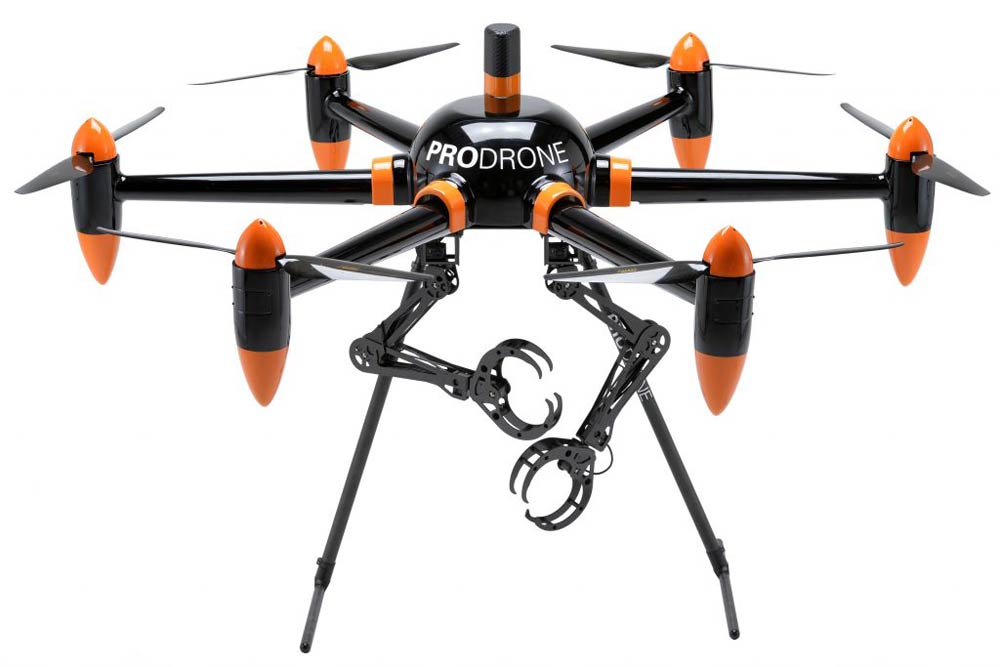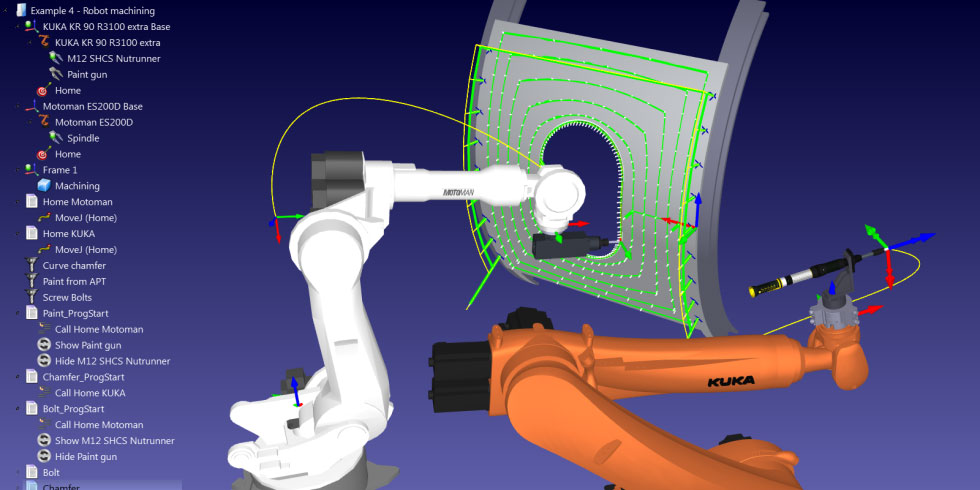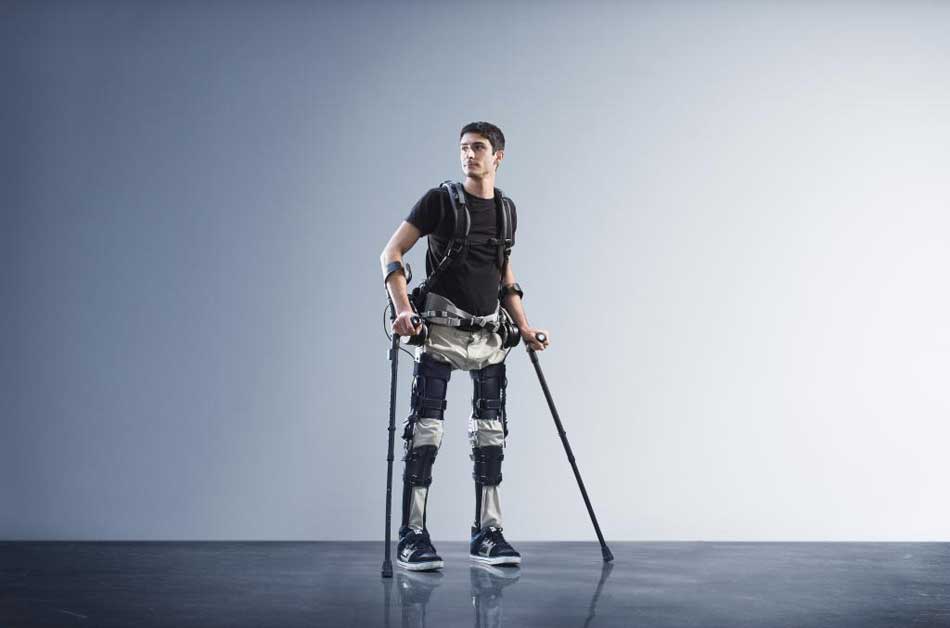In 2011 the number of industrial robots worldwide was estimated at 150,000 units and by 2014 an average annual growth of about 6% is estimated. Asia is at the top of the growth rate with a percentage of 7%, followed by the US with an increased rate of 6% while on the last place we have Europe with an increase of about 4%. These numbers reveal the trend in automation industry where robots are programmed to do repetitive and different tasks. Two areas have integrated most industrial robots, car manufacturers and the electronics industry.
In 1954 the first patent was registered for an industrial robot by George Devol and two years later the company Unimation began the programmable industrial robot revolution. It took 16 years to release the first electromechanically-driven six axes industrial robot, another year passed before the first robotic arm with feedback from touch and pressure sensors was released. Starting with the year 1974 the world of industrial robots has evolved steadily up to a level of intelligence that allows for pattern recognition, feeling of touched objects, working in the same space with humans, high precision, very high speed in motion and a reduced ground footprint.
What is an autonomous industrial mobile manipulator?
An autonomous industrial mobile manipulator (AIMM) is a hybrid system between a service robot and an industrial robot. It is necessary to introduce in production process mobile robots due to increased complexity of tasks, to embed environment adaptation techniques and reduce costs due to use in many related tasks the units in the same time.
The technology exists and is improved since 2008, when research of an autonomous robot for the industrial field was started by the Department of Mechanical and Manufacturing Engineering at Aalborg University in Denmark. There are major differences between an industrial robot and an autonomous mobile robot used in industrial environments. The latter must be mobile, must adapt to the environment and must work together with humans, understanding them, all this while carrying objects of various sizes and weights.
Advantages
- Solve the problem of logistics;
- Moving toward assistance;
- Can do service-minded tasks like maintenance and cleaning;
- Can do various tasks;
- Increases productivity;
- Footprint on the ground is small and uses shared space;
- Can work along humans.
Disadvantages
- May lose traction;
- Due to its high complexity the robot can malfunction, this involves blocking of the production process;
- Maintenance and repair are considerably expensive.
Features of mobile industrial robots
The industry needs flexible robots. The features of industrial mobile robots combine technologies such as navigation, artificial intelligence, a mobile platform, and an intelligent arm. Robot navigation is based on a wide range of sensors such as odometry, laser scanners, inertial sensors, gyro, sonar and vision. Artificial intelligence is provided by complex algorithms and high processing power.
The mobile platform can differ from robot to robot. Until now mobile robots typically used wheels or tracks. The robotic arm must serve in various locations and perform a greatly expanded range of tasks.
Examples of autonomous industrial mobile manipulators
Little Helper
The first version of the Little Helper robot appeared in 2008 in Denmark at the Department of Mechanical and Manufacturing Engineering from Aalborg University. It is a step forward in creating flexible industrial robots, a shift from mass production to mass customization.
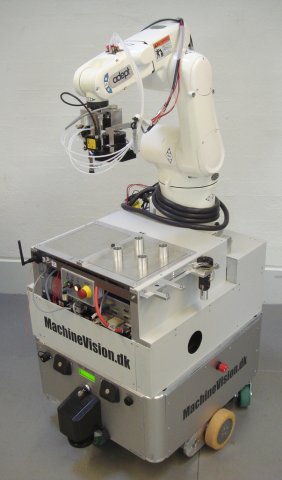
KUKA youBot
To reduce manufacturing costs of mobile robots, the engineers are seeking solutions to use existing industrial robots and other hardware components. Such a robotic arm mounted on a wheeled platform is the KUKA model with 7 DOF and torque sensors integrated for each joint. The mobile platform is a Neobotix MP-L655 model equipped with two SICK S300 laser scanners, five ultrasonic sensors, a Kinect RGBD camera, and a packet of eight 12 volt batteries. The Operating system installed on the robot is ROS, an open source product created by Willow Garage.
Current and future projects aim to create mobile manipulators based on modular architecture. Such an architecture allows users to change components or to add new ones, as easy as a LEGO game. Using Kinect technology allows robots to be controlled by instructions based on gestures.
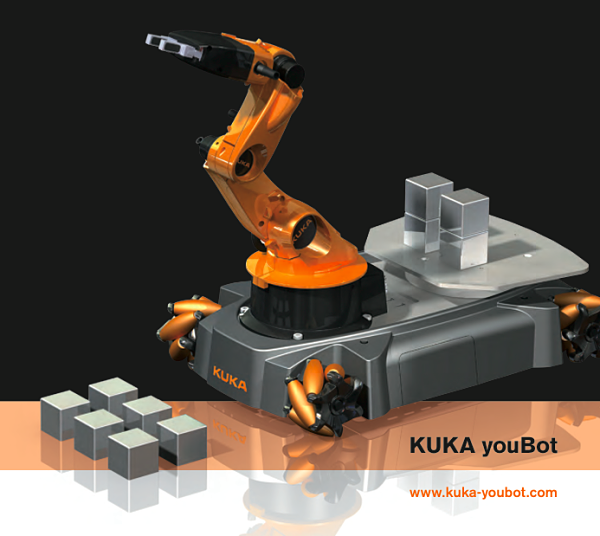
It is to be appreciated that a company like KUKA has developed such a product for educational and research purposes. The price for such a platform is of about 24,000 EUR for a variant that includes the mobile platform and a robotic arm. The robotic arm a KUKA model with 5 DOF, and can manipulate a maximum weight of 0.5 kg. The gripper has two fingers which open up to 70 mm.
The mobile platform can be loaded with up to 20 kg, and can move in any direction with minimal effort. The Mecanum wheels emphasize the high mobility of platform. The battery pack can power the robot for up to 90 minutes. The brain consists of a powerful processor, 512 MB of RAM and 4 GB Compact Flash drive.
Resources- History of industrial robots, RobotWorx
- Industrial robot, Wikipedia
- “Identifying and evaluating suitable tasks for autonomous industrial mobile manipulators (AIMM)” by S. Bogh, M. Hvilsoj et. al., The International Journal of Advanced Manufacturing Technology, vol. 61, jul. 2012
- KUKA youBot store


